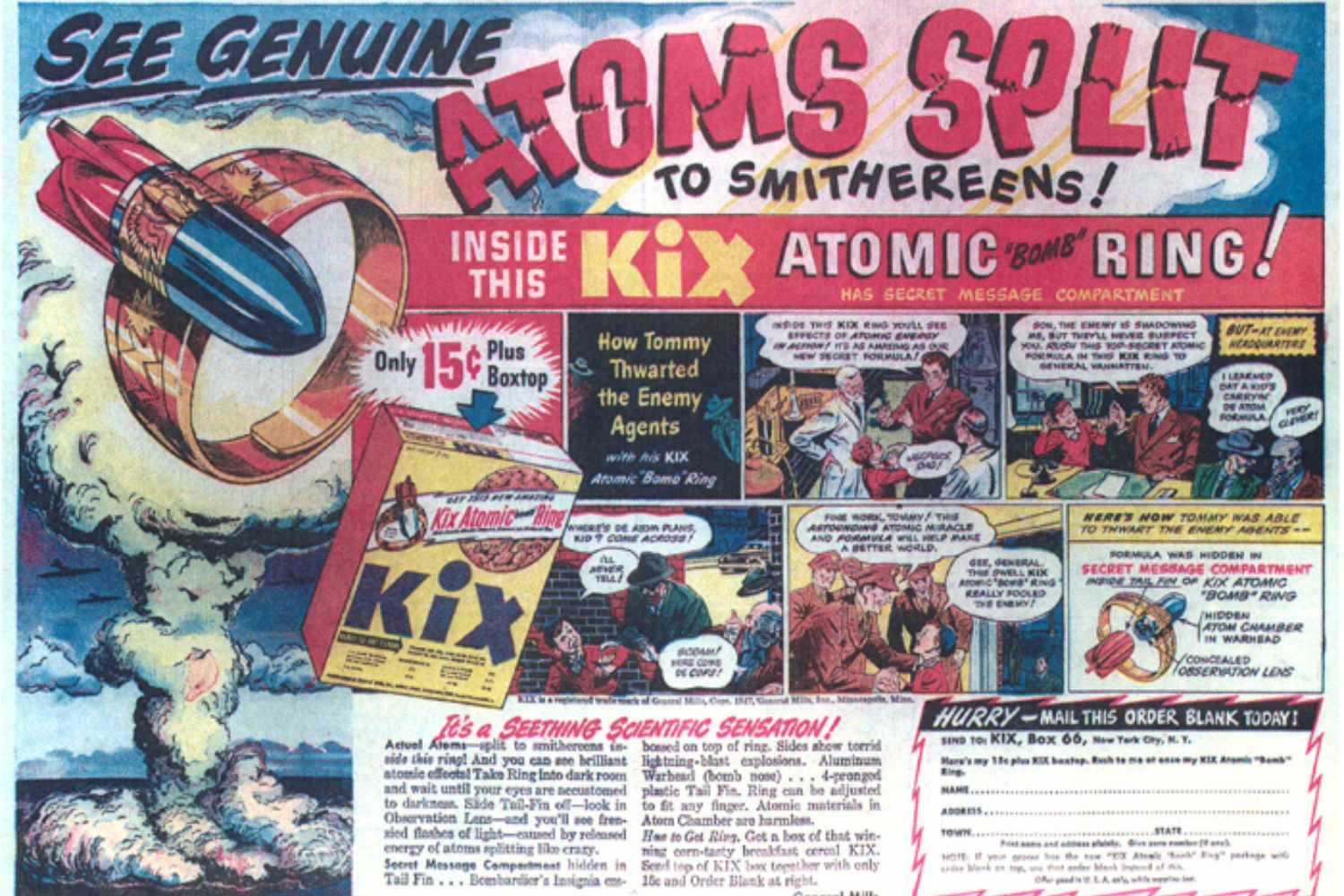A 1947 cereal-box premium, the Lone Ranger Atomic “Bomb” Ring hid real polonium-210 to make sparks in a mini spinthariscope. Sold as “perfectly safe,” it’s now a chilling collectible—part wonder, part warning.

In 1947, as the world limped out of World War II and began flirting with the promise—and dread—of nuclear power, a seemingly innocent U.S. kids’ promotion unleashed one of advertising’s most controversial trinkets: the Lone Ranger Atomic “Bomb” Ring.
General Mills mailed it to Kix cereal eaters who sent in a box top and 15 cents ($0.15 / €0.14). The copy crackled with hype—“a bubbling scientific creation”—built to surf America’s craze for anything “atomic.” Marketed as “perfectly safe,” the ring now reads like a dare, especially in a child’s hands.
A ring with polonium-210 inside
This was no flimsy plastic freebie. The Lone Ranger ring hid a miniature spinthariscope, a device that lets you see emissions from radioactive material. Inside sat a pinhead of polonium-210, an alpha emitter. The otherwise invisible particles struck a tiny zinc sulfide screen in the ring’s “atomic chamber,” creating visible sparks.
Kids were told to pop off the red base—also pitched as a “secret message compartment”—let their eyes adjust to darkness, then peer through a plastic lens. After a minute, real glittering pinpricks flared into view. For a generation raised on cowboys and science fairs, it was an irresistible wow.
A “bomb” on your finger
The name—Atomic “Bomb” Ring—was the most surreal flourish. The Lone Ranger, famous for silver bullets, had little to do with weapons of mass destruction, yet the brand happily hitched itself to the era’s atomic obsession.

The enclosed instructions promised:
“You will see bright flashes of light in the deepest darkness inside the atomic chamber. The vivid, frantic flashes are caused by the energy released by atoms. PERFECTLY SAFE: we guarantee you can wear the KIX Atomic ‘Bomb’ ring in complete safety. The atomic materials inside the ring are harmless.”
Was it really safe?
That reassurance, repeated in ads and package inserts, plays differently now. Polonium-210 is highly radioactive—made infamous decades later by the 2006 poisoning of Alexander Litvinenko. Yes, the ring used a tiny quantity, and alpha particles can’t penetrate skin. But damage the capsule—or open it—and inhaling or ingesting the material could be dangerous.
In the late ’40s, public understanding of isotope risks was thin, and the glow of the “atomic age” drowned out caution. The result: millions of children wore a radioactive novelty on their fingers, wrapped in bright colors and soothing guarantees.
A chilling collectible
Today, the Lone Ranger Atomic Ring is a sought-after curio—chased by vintage collectors, science historians, and nuclear-age rubberneckers. You can spot them on auction sites, often between about $30 (€28) and $300+ (€276+) depending on condition. True survivors are rare in good shape, and the price gaps—and fakes—don’t make authentication easy. The ring stands as a near-paradox of the postwar mood: buoyant faith in science paired with scant awareness of its side effects.
Would anyone hand such a product to a child today? Hard to imagine. In the late 1940s, the marvels of atomic physics bulldozed caution. The Lone Ranger Atomic “Bomb” Ring remains a startling relic of that moment—when even radioactivity could be packaged as a breakfast-table gadget.
